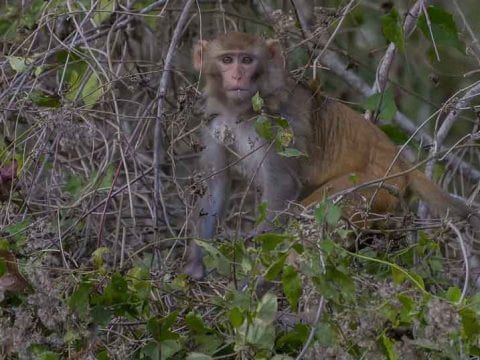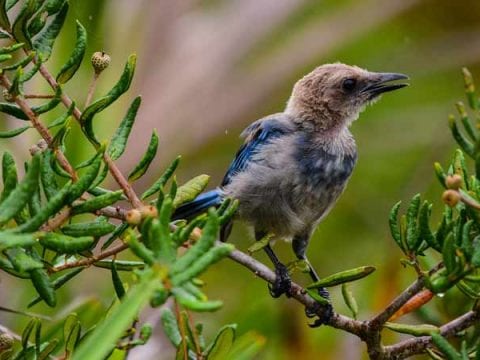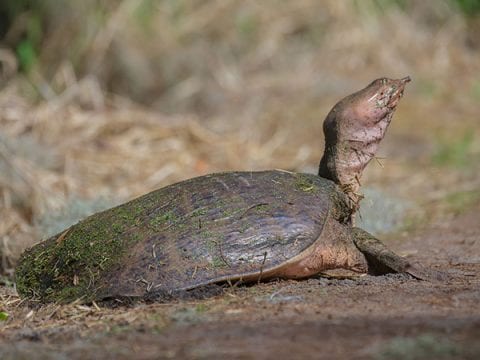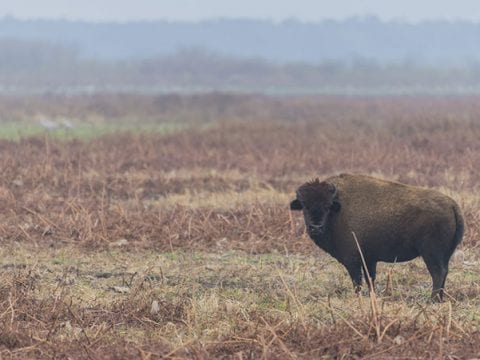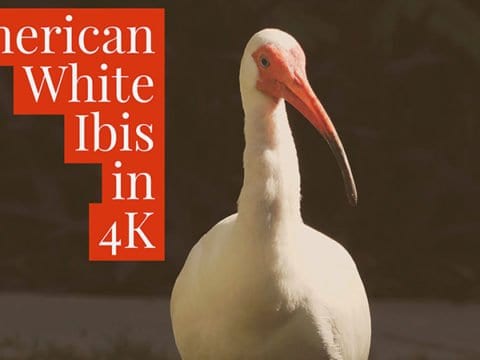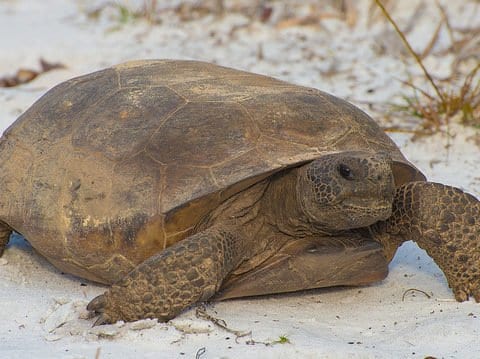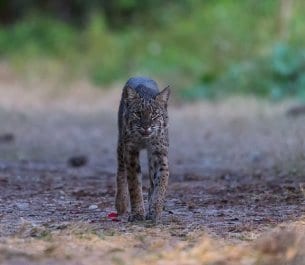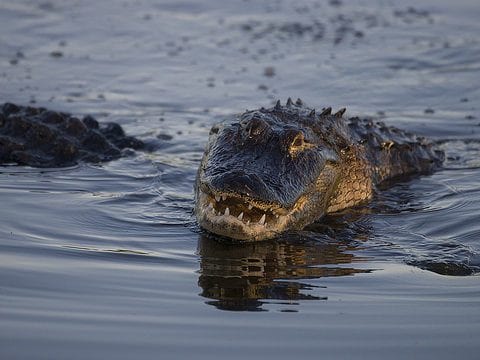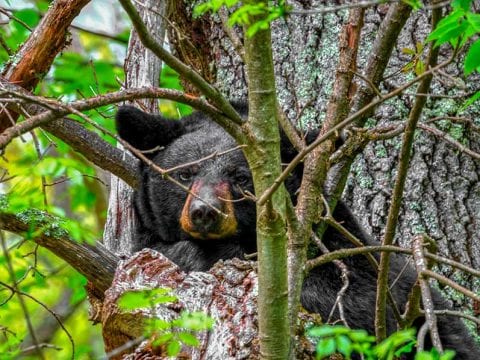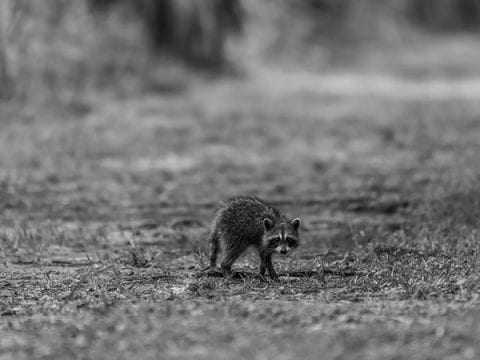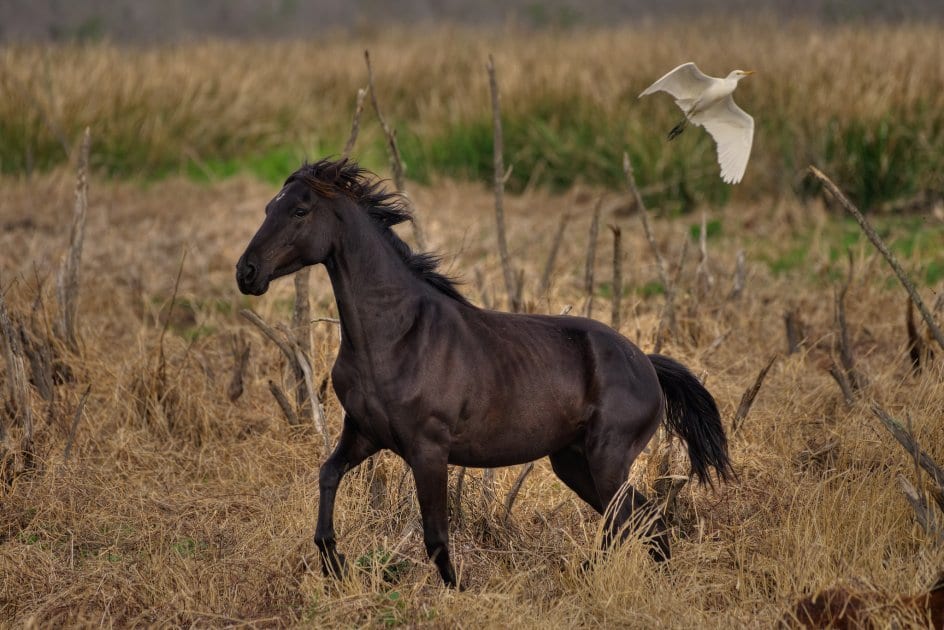
Table of Contents
My Experience
My first hike at Paynes Prairie Preserve State Park along the La Chua trail placed me directly in front of a herd of Florida Cracker Horse. I’d been told that they are sometimes hard to spot along the trail because they are never in the same place for very long, but early that morning I was able to film the horses and the American Bison. I gave both groups of wildlife plenty of distance and was able to spend a lot of time with both. Paynes Prairie is one of my favorite places to hike and here is a little about the horses that live there.
Facts
- Florida Cracker Horses are from Florida, as one might imagine. They are both physically and genetically similar to Spanish-style horses.
- They are known for their agility, strength, herding instinct, quickness, speed and their endurance as well. They are a gaited breed, which means they are bred for selective popular traits. They are great work horses, which is what made them so popular.
- Early America cowboys were referred to “Florida crackers” or “Georgia crackers” due to the cracking sound their whips would make when trying to tame their animals. The name transferred from cowboys to cattle (Florida Cracker Cattle) to horses (Florida Cracker Horse), which is how this particular horse got its name.
- The Florida Cracker Horse became Florida’s official state horse in 2008.
- Cracker Horses were first introduced into Caribbean and Cuba Islands.
- The Florida Cracker Horse has Spanish descendants that were first brought to the Americas in the 1500’s. After Spanish horses were left behind when explorers came to America, the Florida Cracker horse was born. They are very similar to the Spanish Barb and Spanish Mustang.
- The rare breed is a result of trading efforts with Cuba and therefore, Spanish genetics were continuously being introduced to Florida.
- The Cracker Horse became an important movement when it came to the cattle industry for more than 500 years in Florida.
- The breed is known by several different names such as March Tackie, Prairie Pony, Grass Gut, Seminole Pony, Florida Cow Pony, Chickasaw Pony and more names known locally.
- During the Great Depression in the 1930’s, many breeds of horses were transported from the Dust Bowl to Florida. This led to the infestation of a parasite known as the screwworm. The screwworm spread from horses to cattle which led to the cowboys changing their preferred horse from the Cracker Horse to a stronger breed, the American Quarter Horse so that the infected cattle could be herded, properly. This led to the near extinction of the Florida Cracker Horse.
- Because of the screwworm infestation, the number of Florida Cracker Horses left dwindled. It was only through privately owned pure-blood Florida Cracker owners like Ayers, Whaley, Bronson and Harvey that the bloodline was saved.
- Two of Ayers horses, a stallion named Story and a filly named Isabel can be found at the Florida Agricultural Museum.
- Two of Bronson’s horses, a mare name Ana and a filly named Supresa can also be found at the Florida Agricultural Museum as well.
- In order to preserve the breed, The Florida Cracker Horse Association was formed in 1989. The first thing the association did was track down all the herds that were left of the breed. There are 300 horses registered currently and that list continues to grow yearly. Through the Florida Cracker Horse Association, the Cracker Horse has been recognized as a very vital part of Florida’s history.
- Florida Cracker horses were not just for herding cattle, they were also very important in family farms for work stock and for pulling buggies well into the 20th
- The reason the Florida Cracker Horse was such a power horse was due to its gait. This particular breed has a ground-covering gait which was extremely effective in helping cowboys to get their work done more efficiently. Many other gaits found useful for horse riders in the Florida Cracker horse breed is the trot, the running walk, the ambling and the Paso-type gait.
- Many similarities can be found between the Florida Cracker Horse and other breeds but most closely related would be found in Indian breeds. Florida Cracker Horses, originally of Spanish descent were able to adapt themselves to Florida’s environment. They become the kind of horse that was needed to survive and thrive within the state.
Identification
Florida Cracker Horses are Spanish-style horses that are found in many colors such as black, gray, bay, dun, grullo, roan, pinto and chestnut. They are also known by many different names such as Grass Gut, Florida Horse, Florida Cow Pony, Prairie Pony, Seminole Pony and Chickasaw Pony. The average breed is the same size at its Spanish ancestors, standing 54 to 60 inches high and weighing in between 700 to 1,000 pounds.
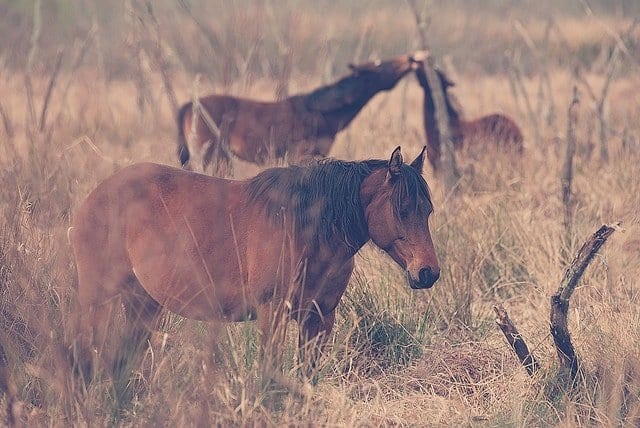
A group of Florida cracker horses in Paynes Prairie Preserve State Park.
Florida Cracker Horses have a slightly concave profile, the underline of their body is longer than their topline and they have a well-defined, yet short jawline. Their eyes are typically dark but alert in nature and usually with a gray, blue or white sclera. Their mane is long and thick. Most Spanish breeds have a crest-like appearance in their neckline but the Cracker Horse does not, instead their necks are very narrow and is the same distance from their withers to their croup. Their croup is shot and sloping and their tail is set med-low. Their withers are pronounced but not very prominent while their shoulders are long and sloping but laid back with smooth muscles that allow for their strength. Just like their ancestor, the Spanish Barn horse, their back is short with well sprung ribs which makes them great horses for lifting and pulling. The strength and endurance this horse has is a huge factor in why the breed was so effective for more than 500 years.
This particular breed of horse is very compact, has a narrow chest and a short yet, very strong back. All traits that led to their popularity throughout American history. They are great for speed, agility and endurance riding. They are also selected horses for riding sports such as team penning or roping. Florida Cracker Horses are gaited horses and therefore are recognized for their amble and running walk as well as gallop, trot, canter and regular walk. Florida Cracker Horses are also great at the water sport, polo. They are great for working hard on the farm and playing with the kids, as they are bred for doing both. They can work both day and night and meet traveling requirements. They have shown great patience and amazing strength as they have shown ability to survive the Rocky Mountains and unfavorable elements without injury.
Because of the high and low altitudes of the state, there were some issues in raising the horse breed. Because of the two different extremes, horses living on the higher ground are stronger and have a larger body than those who are raised on flat land.
Cracker breeds are very strong, loyal and intelligent horses. They are also tenacious, mild and gentle in their behavior. They are great for hard-working environments and also for relaxed trail riding. Their diversity makes them a popular choice. William Bartram, a famous 18th century naturalist described the horses as “the most beautiful and sprightly species of that noble creature that he had ever seen”.
For their young foals, adult Cracker horses will surround it if they feel threatened by someone around them. They can be extremely protective. However, the horses will generally keep to themselves and will not interact with other animals much.
The Florida Cracker Horse was used for many different things such as pulling wagons, buggies, sleds, plows, cane mills and taking kids to school during the Frontier years. Today, they are used for very different activities such as team roping, team penning, endurance riding, trail riding and they are also used for many historical reenactment shows.
History
In 1521, horses first arrived in North America via Ponce de Leon, a Spanish explorer and conquistador, during his second trip to the region. They were utilized by livestock herders, scouts and officers. Later expeditions brought in more horses and cattle into Florida from Spain. During the 16th century, horses were being used in a wide-spread approach for cattle businesses, locally and by the late 17th century, industries were flourishing in both northern Florida and southern Georgia. The horses that were migrated from Spain to North American bred to create Spanish Jennets, Sorraias, Andalusians, Barbs, Garranos and Iberian breeds. All of these breeds are very small and had the physical traits of Spanish breeds such as wide foreheads, low tails, sloping shoulders and short backs. The primary reason for horses was for stock purposes which led to the breeding of the Florida Cracker horse. An original Chickasaw horses which were bred by Chickasaw Indians, was captured during Hernando de Soto’s (another famous Spanish explorer and conquistador) expedition. Chickasaw horses became extinct once it was bred to create the Florida Cracker horse. Born through natural selection, this breed of horse was challenged by the environment and molded by nature which led largely to Florida becoming a great ranching and general agriculture state.
From mid-16th century to the 1930’s, this breed was the predominant choice among southeastern America. From 1861 to 1865, during the American Civil War, Florida bred Spanish horses which were highly required for riding purposes. The cattle industry was really booming through a ten-year period from about 1868, about 1.6 million cattle were exported from ranches which led to Florida becoming the leading exporter within the United States. Florida was completely dependent on the Florida Cracker Horse to get their product to the market. Florida had quickly become known as “cattle country” due to the Florida Cracker Horse and its movement of cattle. This was long before the American Quarter Horse was introduced. The Florida Cracker Horse was known as an extraordinary cow horse. Back in the day, one can imagine that Florida looked much different than it does today which made from some pretty harsh conditions when it came to both cattle and horses. Florida was full of shrubbery and was completely overgrown and therefore, not just any horse could have trudged that land. The Florida Cracker Horse are not only agile, they are tough and cattle-smart and very comfortable to ride. Since cowboys spent long days on the saddle, this was often a very good attribute to find in a horse.
In the 1930’s, during the Great Depression, a government program was created to help people find relief by shipping cattle from the Dust Bowl to the west and into the state of Florida. With the introduction of new non-native cattle into the area, an infestation of the screwworms, a parasite and ticks came with them. Afterwards, fencing methods had to be redefined and the cattle had to be dipped in an effort to contain the parasite. Due to the upgrades, the face of cattle herding had changed and the cowboys found that the Florida Cracker horses could not hold the western cattle, they were better for smaller cattle. A larger, stronger horse was needed to rope and hold the cattle for treatment. This led to the replacement of the American Quarter Horse which in turn resulted in near extinction for Florida Cracker horses.
Preservation Efforts
With only about 2,000 Cracker Horses worldwide, the breed remains very rare which makes preservation efforts important. They are an important part of Florida’s Agricultural Heritage and very much deserve a place in Florida’s future.
Many preservation efforts by private families and the Florida government have saved the breed from becoming completely extinct. However, the number of Florida Cracker horses alive today remains very low.
John Law Ayers, a Florida Cracker breeder donated his herd of pure-bred Cracker horses to the state of Florida in 1984, which was a pivotal move toward preserving the breed. Due to this donation, the State of Florida was able to start three small herds in Withlacoochee State Forest, Tallahassee and Payne’s Prairie State Preserve. In 1991, a registry for the breed was established in which 75 horses were elected as “foundation horses” and 14 more horses were added to the registry as their offspring. The registered horses became the four lines of Cracker bloodstock and designated as purebreds by breeding experts.
Three herds and 100 other Cracker Horses were all that remained of the breed by 1989 which led to the erection of The Florida Cracker Horse Association. The FCH Association was established in 1989 for the sole purpose of preserving the Cracker House. Thanks to the efforts of the agency, more than a thousand Cracker Horses are registered in Florida. In fact, in 2009, 900 purebred Cracker Horses were on the registry.
Paynes Prairie State Preserve, a Citizen’s Support Organization located in in Gainesville, Florida is a great place to see Cracker Horse’s roam free. The horses that can be found on the trail are free to run wild. This particular breed of horse lives completely free on Payne’s Prairie, they are not groomed or fed and are free to find their own way to live. The line of horses was started by in 1985 by John Ayers pure-bred horses which were both bought and donated to the preserve.
Florida cares very deeply for the preservation of the Florida Cracker Horse. The breed made a huge impact on the growth of the state and its agricultural heritage. In 2008, the state of Florida made the Cracker Horse it’s official state horse.
While many people have taken up the cross breeding of Florida Cracker Horses, it is important to the state of Florida to keep the line of these horses pure bred. They want to maintain the breeds purity so that the breed can increase in number throughout the next generations.
Riding A Florida Cracker Horse
To know what a Florida Cracker Horse looks like and to preserve two amazing qualities of this horse, to ride one is entirely different. For anyone who has ever ridden a Florida Cracker Horse, they will tell you the only way to truly appreciate the animal is to get on one and ride it. They make for a fascinating ride because of their ground-covering gait. They can cover a lot of land in their daily walk. Because of their gait, they have been found to be one of the most comfortable horses to ride on for long periods of time. Florida Cracker Horses have an array of different talents such as the ambling gait, the trot, the running walk and the flat-footed walk which are great for those who like to participate in rodeos. There is no special shoe required to ride the Cracker Horse, most often people just ride them barefooted.
There are still several places around the United States that have Florida Cracker Horses that can be ridden. The Florida Cracker Trail Association is a great place to ride one of these amazing horses. The Florida Cracker Trail Association was created in 1987 and their mission is to “Keep History Alive”. They have an annual ride that one can sign up for to be able to take a trail ride on a Florida Cracker Horses. There are also many ranches around the United States that own Florida Cracker Horses where visitors can pay to ride on one.
Riding on such an amazing horse such as the Florida Cracker Horse is definitely a great achievement to put on one’s bucket list. Watching them in their element, wild and free is another thing one could aspire to. They are a huge part of American History and people are working very hard to preserve them.

